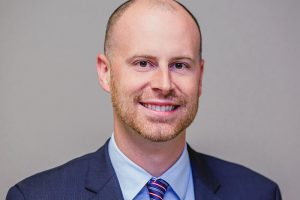Since Tiger Woods’ recent win at the 2019 Masters Tournament, I am sure there are a lot of people daydreaming about what life would be like if they were able to play golf as well as Tiger Woods. Think champion, and that instantaneous visualization of someone who is super talented comes to our minds so vividly and with such ease.
It is only when we allow our brains to wonder, “What did it take for Tiger Woods to become that good?” that things get really interesting. The answer, obviously, is hours upon hours of time and practice. That realization may lead us to think “ugh” maybe being Tiger Woods is not all it is cut out to be!
So, what is “mastery?” According to George Leonard, the author of the book Mastery: The Keys to Success and Long-Term Fulfillment, “Mastery can bring rich rewards, yet is not really a goal or destination but rather a process, a journey. We tend to assume that mastery requires a special ticket available only to those born with exceptional abilities [like Tiger Woods!]. But mastery isn’t reserved for the “super talented” or even those who are fortunate enough to have gotten an early start. It’s available to anyone who is willing to get on the path and stay on it – regardless of age, sex, or previous experience.”
Starting the pursuit of mastery usually revolves around developing some specific talent or skill set that we’ve targeted as a strength or an interest of ours. We start by devoting considerable amounts of time toward that thing, and doing so consistently! Many of you may be familiar with the author and speaker Malcolm Gladwell’s “10,000 Hour Rule.” It states that it takes, on average, 10,000+ hours of “deliberate practice” to become world-class at anything. Wow! 10,000 hours is a huge amount of time.
Lately, I have been reflecting on two of the skills on which I have devoted more than 10,000 hours. They are playing the saxophone and being a financial planner. Looking back at my school years playing saxophone, and using some rough averages, I calculate that I practiced about 1,000 hours from fifth to eighth grade, 2,000 hours in high school, and about 8,000 hours in college.
That means, in all probability, I hit 10,000+ hours of playing the saxophone about half way through my senior year of college! And I will say the last 20 years of playing saxophone after hitting that milestone that have been very fulfilling. To be well over that “hump” of time and commitment has allowed me to see, feel and do things differently because of having reached and mastered a certain skill level.
Sitting in front of and working closely with financial planning clients, I estimate that in my first five years of shadowing my mentor and this firm’s Founder/Partner, Marty Kurtz, CFP®, I reached 5,000 hours of practice. It then took me another five years of leading meetings on my own to reach 10,000 hours. It took 10 years to get there, but as I reflect on the last six years of my growth as a financial planner and what I can do now, I am grateful to be over that 10,000-hour milestone!
So what comes next? Beyond 10,000 hours, the constant pursuit of mastery continues! We can think of achieving mastery as getting to the peak of a mountain, but once the peak is reached, is our journey really done? Is it over? Only if we let it be!
 Like any difficult climb, getting to the top can involve reaching lots of plateaus, ascending great heights, and covering rough terrain to get through. As Darwin told us, “Survival of the fittest is about survival of those best able to adapt, and adapting is a continual process.” So not viewing a challenge as having an end game is the mindset we need to have. As we get more and more comfortable with certain skills we have developed, what does that allow us to do? It allows us to think about and focus on more and different things that we could not before, because we had to devote that mental bandwidth to sharpening our basic skills.
Like any difficult climb, getting to the top can involve reaching lots of plateaus, ascending great heights, and covering rough terrain to get through. As Darwin told us, “Survival of the fittest is about survival of those best able to adapt, and adapting is a continual process.” So not viewing a challenge as having an end game is the mindset we need to have. As we get more and more comfortable with certain skills we have developed, what does that allow us to do? It allows us to think about and focus on more and different things that we could not before, because we had to devote that mental bandwidth to sharpening our basic skills.
Going back to Tiger Woods…during his golf swings, is he thinking, “Keep your head still and swing through the ball” like I do? Of course not. He is thinking of so many other things that I cannot even begin to fathom them until I have swung a golf club that much. Do I need to think about where my fingers go on the saxophone keys or how to stay relaxed and calm in a financial planning client meeting? Heck, no. Because having done these things so many times, I do not even need to think about them. Over time, our finely honed skills become second nature.
So what is the key to life-long learning beyond 10,000 hours? Devoting yourself to the cause and continue to find ways to adapt and get better at your craft, whatever it is. Some notable figures to reference, who devoted themselves to the pursuit of their cause, are Albert Einstein, John Coltrane, Steve Jobs, and Michael Jordan. To quote George Bradt in Beyond 10,000 Hours: The Constant Pursuit of Mastery, “No one masters the universe, life, or emotions. They pursue understanding, sensing, and creating. It’s not about you. It’s not about your talents or your strengths. It’s about the never-ending pursuit of learning and getting better at inspiring and enabling others to join you in a shared purpose.” So lets go!
 Matthew Sivertsen, CFP®, CeFT™, is a Partner/Sr. Financial Planner in the Quad Cities office of The Planning Center, a fee-only financial planning and wealth management firm. Email him at matt@theplanningcenter.com.
Matthew Sivertsen, CFP®, CeFT™, is a Partner/Sr. Financial Planner in the Quad Cities office of The Planning Center, a fee-only financial planning and wealth management firm. Email him at matt@theplanningcenter.com.







